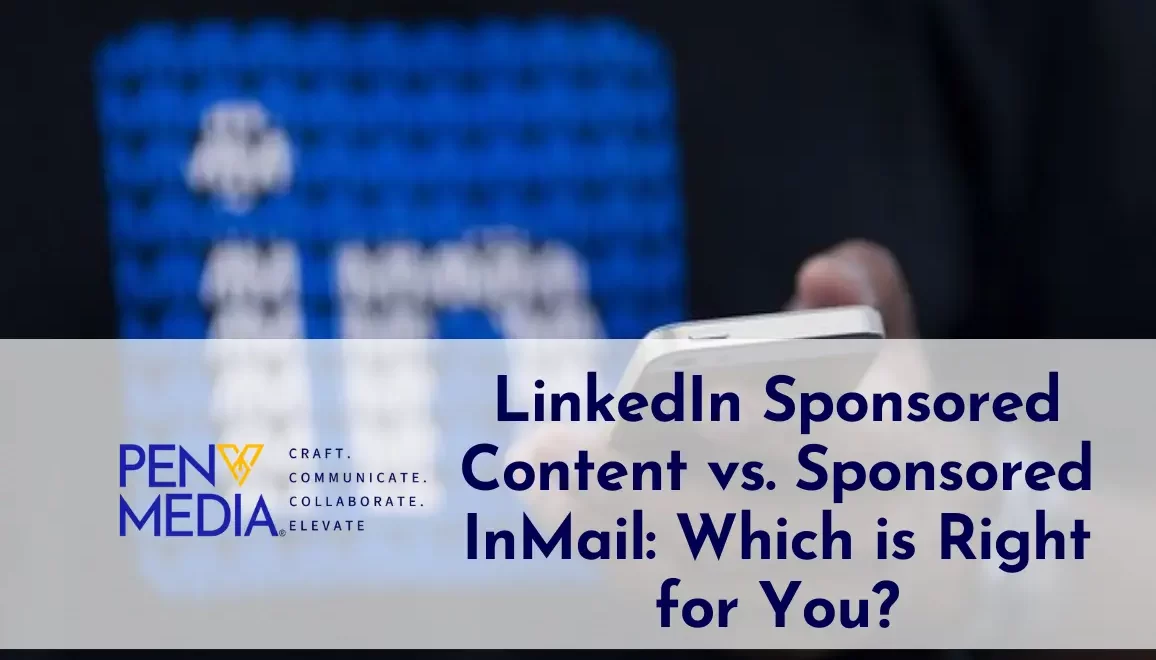In the realm of professional networking and B2B marketing, LinkedIn stands as a formidable platform. It offers many advertising options. They can help businesses reach their target audience well. Among these options, LinkedIn sponsored Content and sponsored InMail are two powerful tools. However, each serves different purposes and has its unique advantages. Understanding the differences between them can help you choose the right strategy for your marketing.
What is Sponsored Content?
Sponsored Content refers to native ads. They appear directly in the LinkedIn feed of your target audience. These ads can take the form of single image ads, video ads, carousel ads, and event ads. Sponsored content is meant to blend with organic posts. This makes them less intrusive and more engaging for users.
Advantages of Sponsored Content
- Sponsored content is easy to see in the LinkedIn feed. Users are actively engaging with it. This increases the chances of your ads being seen by a larger audience.
- Sponsored content can be highly interactive and engaging. It has options like video ads and carousel ads. They allow you to showcase your products or services in a dynamic way.
- You can share many content types. These include blog posts, whitepapers, videos, and infographics. They help to educate and inform your audience.
- LinkedIn has many targeting options. They let you reach specific audiences based on job title, industry, company size, and more. This ensures that your content is seen by the most relevant users.
- Sponsored content provides detailed analytics. They let you track impressions, clicks, and conversions. You can also track other key metrics. They measure the success of your campaigns.
When to Use Sponsored Content
If your goal is to reach a broad audience with valuable content, sponsored content is a great choice. Informative posts nurture leads and position your brand as a thought leader.
What is Sponsored InMail?
Sponsored inMail lets you send personalized messages directly to the LinkedIn inboxes of your target audience. These messages appear like a regular LinkedIn message but are labeled as “Sponsored.” Sponsored inMail is delivered only when users are active on LinkedIn, ensuring higher open rates.
Advantages of Sponsored InMail
- Sponsored inMail enables you to craft personalized messages. They speak directly to the recipient. This can make your communication more impactful and relevant.
- High Open Rates: Sponsored inMail is delivered only when users are active on LinkedIn. So, it tends to have higher open rates than email marketing.
- Sponsored inMail allows for one-on-one communication. It is great for direct sales pitches, event invitations, or personalized offers.
- InMail can have call-to-action buttons, links, and images. They make your message engaging and actionable.
- Sponsored inMail offers precise targeting. It ensures your messages reach the right audience. This is based on their LinkedIn profile.
When to Use Sponsored InMail
Sponsored inMail is for direct response campaigns to encourage immediate action from the recipient. This could include event registrations, product demos, consultations, or special offers. It is also effective for reaching high-value prospects with personalized outreach.
Comparing Sponsored Content and Sponsored InMail
Both Sponsored content and Sponsored inMail are powerful tools on LinkedIn. But, they serve different purposes and excel in different scenarios. Here’s a comparison to help you decide which one is right for your needs:
1. Audience Reach
- Sponsored Content: Ideal for reaching a broad audience and generating brand awareness. It’s perfect for top-of-the-funnel marketing activities.
- Sponsored InMail: More effective for targeted, one-on-one communication. It’s suitable for mid-to-bottom-of-the-funnel activities where personalization and direct engagement are crucial.
2. Engagement:
- Sponsored Content: Engages users with rich media and interactive formats within the LinkedIn feed. Suitable for educating and informing your audience.
- Sponsored InMail: Offers a personal touch with direct messages that encourage immediate action. Best for direct response and high-engagement scenarios.
3. Personalization:
- Sponsored content can be personalized somewhat. This is done through targeting options and content relevance. But, it is less than with direct messaging.
- Sponsored inMail is highly personalized. It lets you tailor messages to individuals for maximum impact.
4. Cost:
- For Sponsored content, costs can vary based on bidding strategies, targeting options, and competition. It tends to be more cost-effective for broad reach.
- Sponsored inMail is more expensive per message. But, it can deliver higher ROI. This is due to its personal nature and high engagement.
5. Objectives:
- It’s best for driving traffic. It builds brand awareness and nurtures leads with valuable content.
- Sponsored inMail is great for direct sales, event invites, product demos, and any case needing quick action from the recipient.
Choosing the Right Tool for Your Campaign
The choice between sponsored content and sponsored inMail depends on your goals. It also depends on your target audience and your message’s nature. Here are some scenarios to help you decide:
Use Sponsored Content if:
- You want to reach a broad audience with educational and informative content.
- Your goal is to increase brand visibility and drive traffic to your website.
- You are looking to generate leads through content marketing efforts.
Use Sponsored InMail if:
- You need to communicate directly with high-value prospects.
- Your goal is to drive immediate action, such as event registrations or product demos.
- You want to deliver personalized messages that resonate on a one-to-one level.
Conclusion
Both LinkedIn sponsored content and sponsored inMail offer unique advantages. These can greatly improve your marketing on LinkedIn. You can create better campaigns by knowing each tool’s strengths. Then, you can align them with your marketing goals. You may want broad brand awareness or personalized engagement. LinkedIn’s ads offer the flexibility and precision you need for today’s digital landscape. For personalized guidance regarding LinkedIn marketing, reach out to our experts at PenVmedia.



Leave a Comment